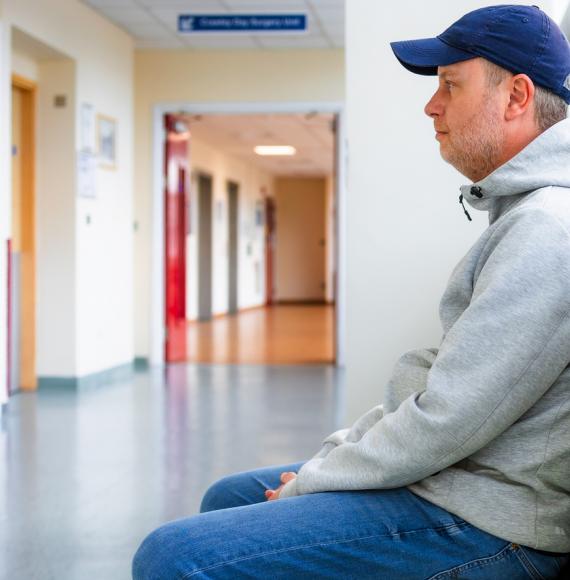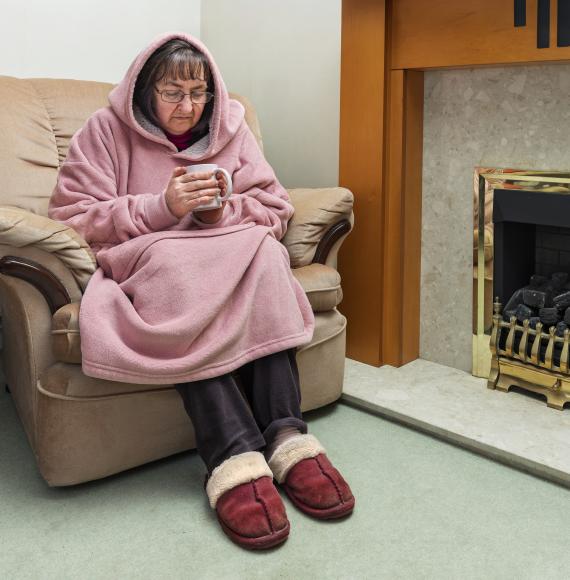Community mental health services are at the heart of the NHS Long Term Plan. A key objective is the development of new and integrated models of primary and community mental care to support people with severe mental health illnesses. By 2023/24, this is intended to enable a greater degree of choice and control over care choices to at least 370,000 adults and older adults nationally. To meet this challenge, service providers are being supported to move their core community mental health teams towards a new place-based, multidisciplinary services across health and social care, aligned with primary care networks.
New and modernised community estates play a key role here. And although it can be difficult to find appropriate clinical facilities, there remains opportunities in purpose-built health facilities and converted office, retail, and perhaps even light-industrial buildings. Such spaces could be transformed for specific amenities including primary and secondary mental health services, for example.
In this article, Elliot Rose, Senior Surveyor at Lexica will discuss the development of accessible clinical spaces in the community and why introducing mental health presence in communities can be beneficial to the delivery of mental health services across the country. Elliot will also explore how to find and assess such spaces, what pitfalls may be faced and accessing the capital needed for such projects.
Community mental health services are at the heart of the NHS Long Term Plan. A key objective is the development of new and integrated models of primary and community mental care to support people with severe mental health illnesses. By 2023/24, this is intended to enable a greater degree of choice and control over care choices to at least 370,000 adults and older adults nationally.
To meet this challenge, the NHS community mental health framework supports service providers to move their core community mental health teams towards new place-based, multidisciplinary services across health and social care, aligned with primary care networks.
The development of a place-based model of community mental health care is led by clinicians, commissioners, practitioners, managers, and service users. But clearly estate plays a key role in successful implementation. Moving towards a new and modernised community estate, whilst also integrating mental health, physical health, and social care, is not straightforward.
The first step is getting a clear understanding of space requirements. This applies whether implementing the changes piecemeal, or as part of a larger place-based community transformation. Do the clinical leaders driving the change know how many consulting rooms, clinic rooms, and group rooms each of their services need? Scheduling out space requirements for clinical services is a complex task. Healthcare planning advice is often needed to bridge the gap and set the changes off in the right direction.
Equipped with a clear brief of the space and locational requirements, the first place to look is within existing health estates. Making full use of existing estate, especially good quality estate, should be the priority. The adoption of agile working principles is essential to make this work.
By speaking with the relevant ICS Estates Lead you can establish a system-wide view of possible opportunities within existing health estate. Attend your Local Estates Forum and communicate the requirement to the local health and social care partners.
If there isn’t any appropriate space within existing health estate, there are alternatives. Amendments to the Town and Country Planning (Use Classes) Order 1987, which categorises the use of land and buildings, means that offices can be converted to health clinics without requiring a Change of Use application.
When considering the conversion of an office to a community mental health clinic, it is important to get a clear understanding of possible constraints. Is the office multi-tenanted? If so, can the clinical teams share an entrance with the other tenants, or is a separate entrance required? Does the office offer an opportunity to consolidate multiple clinical teams at scale, with clinical on the lower floors and workspace on the upper floors? Do any of the clinical teams require access to a pool car parked onsite? What are the opening hours of the office, does it align with the operating hours of the services? In what condition is the office being let? It is also vital to consider the public transport links here.
Retail also now benefits from not requiring a Change of Use application, for conversion to a health clinic. Finding suitable properties on the high street can be challenging. Often high street retail units have a single frontage making it difficult to bring natural light into the property once it has been subdivided. Retail units with flatted residential units above often suffer from leaks coming in through the ceiling from the flats. Recurring leaks from flats above can lead to frequent and costly repairs, put clinical areas out of use for weeks at a time and is generally unpleasant for staff and service users.
Retail isn’t all bad though, of course! If you can find a unit which lends itself well to being reconfigured as a health clinic, the occupational costs are often competitive with offices, and they are usually centrally located with good transport accessibility. Access to the facility is very important - in rural locations that might mean lots of car parking, in suburban/urban locations that means good public transport accessibility. The ideal lease length for these arrangements is a 5-10 year lease with break options linked to the service contract throughout the term depending on the level of flexibility requires.
Schools should be considered for Child and Adolescent Mental Health Services (CAMHS). Spare capacity in schools creates a brilliant opportunity for CAMHS to co-locate services in age-appropriate facilities. Engage with your Local Authority as a first point of contact. Be aware though that a Change of Use application will be required if converting part of a school to a community mental health clinic. This application will take a minimum 8 weeks and often takes longer.
Across all property types, there are several other pitfalls to be aware of. To name a few:
- Fit-out and lease-end dilapidation reinstatement costs. The capital departmental expenditure limit (CDEL) limits the amount of capital that can be spent by an NHS Trust in any given financial year. Explore whether the landlord will undertake fit-out works on your behalf. This could be paid for in the form of a lease premium, which your accountants may be able to treat as revenue spread over the lease term. Or perhaps the landlord will undertake the works in exchange for a higher headline rent.
- Revenue funding. Is the space for new or expanded clinical services? Do they have an allowance for premises costs? This is often underestimated as part of the tender process, and therefore underfunded. Make sure internal governance is properly navigated at the outset of the property search.
- Ongoing maintenance. If you the tenant are responsible for repairs and maintenance, will your in-house facilities management (FM) teams be able to take this on? If the property is an outlier geographically, will a third-party FM team need to be procured? Ask these questions as soon as a site is found.
- External mechanical plant and duct routes. Is air conditioning required for the storage of medication or within a clinic room. If so, where will the duct be routed, and the mechanical plant be located? Is it within your demise? If not, what permissions might be required? This can be a particular challenge in high street retail locations where the unit might be sandwiched on all sides by properties under different ownership.
- What’s the lead time for bringing IT network connectivity into the building? Is there a line already serving the building or will your provider have to bring one in? Engage your IT team as early in the process as possible, ideally as soon as a potential site has been identified.



















